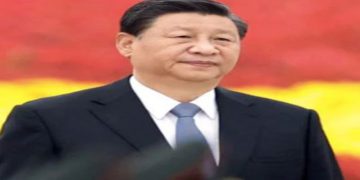Beijing: China’s exports rebounded unexpectedly to growth in March despite a decline in US and European demand following interest rate hikes to cool inflation.
Exports rose 14.8 percent over a year earlier to $315.6 billion, recovering from a 6.8 percent decline in January and February, customs data showed Thursday. Imports sank 1.4 percent to $227.4 billion, a smaller contraction than the 10.2 percent slide in the previous two months.
China’s politically sensitive global trade surplus widened by 82 percent over a year earlier to $88.2 billion.
Exports to the United States and the 27-nation European Union, China’s biggest foreign markets, declined after the Federal Reserve and other central banks raised rates to slow consumer and business activity.
That was offset by double-digit gains in sales to Canada, Indonesia, Russia and other markets.
“The current external environment still is severe and complex,” said a government spokesperson, Liu Daliang, at a news conference.
Trade weakness adds to complications for President Xi Jinping’s government, which is trying to revive economic growth that sank last year to 3 percent, the second-weakest rate since the 1970s. The ruling Communist Party set this year’s growth target at “around 5 percent.”
In the first three months of the year, exports edged up 0.5 percent over the same period of 2022 to $821.8 billion, the General Administration of Customs of China reported. Total imports contracted 7.1 percent to $617.1 billion.
A revival in Chinese demand would be a boost to global suppliers, replacing weak US, European and Japanese sales. China is the biggest export customer for its Asian neighbors and a key consumer market.
Retail sales and other activities are gradually improving after anti-virus restrictions that kept millions of people at home and temporarily shut down Shanghai and other industrial centers were lifted in December.
The economy also is under pressure from tighter controls on the use of debt in China’s vast real estate industry, which triggered a slump in mid-2021.
Exports to the United States slid 7.7 percent in March from a year earlier to $45.9 billion, an improvement over the 21.8 percent contraction in January and February.
Imports of US goods gained 5.6 percent to $16.1 billion, rebounding from a 5 percent decline in the first two months of the year. The Chinese trade surplus with the United States shrank by 14 percent compared with a year earlier to $27.6 billion.
Imports from Russia, mostly oil and gas, surged 40.5 percent over a year ago to $11 billion, accelerating from a 31.3 percent increase in January and February.
China, the biggest global energy consumer, has stepped up purchases from Russia to take advantage of price discounts after Washington, Europe and Japan cut imports to punish President Vladimir Putin’s government for its attack on Ukraine.
China can buy Russian oil and gas without triggering Western sanctions. That helps to buoy the Kremlin’s foreign revenue, but President Joe Biden has warned Beijing against helping Moscow’s military.
Exports to Russia more than doubled to $9 billion. China’s trade deficit with Russia narrowed by 50 percent to $2 billion.
Exports to Europe tumbled 18.2 percent over a year ago to $45.9 billion while imports of European goods shrank 37.2 percent to $25.1 billion. China’s trade surplus with Europe widened by 29.2 percent to $20.7 billion.
AP






































